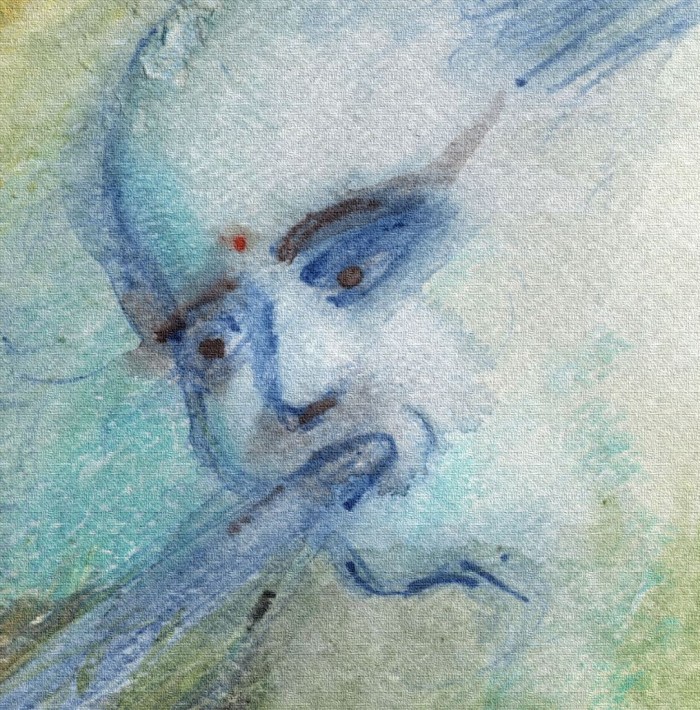“The wind blows where it wishes and you hear the sound of it, but do not know where it comes from and where it is going; so is everyone who is born of the Spirit.” ~ John 3:8
During my research into the history of compasses, I inadvertently stumbled upon an amazing world of winds.
I quickly realized that since the beginning of recorded time, winds have played prominent roles in the myths and legends of ancient and indigenous societies. Throughout history many cultures have regarded wind as a mirror of Spirit. In Christianity, the Holy Spirit is synonymous with air. In Greek pneuma, like the Hebrew word ruach or the Sanskrit word prana, means “breath,” “wind,” or “spirit.” In parts of South America, the wind is known as wayra.
As these winds lifted my imagination to greater heights, I became aware that there was much more to the energies of emotion and thought than I had first imagined. After spending many months researching the wonderful world of winds, I learned that wind energy is much more than a simple metaphor, and actually represents a real, dynamic force of nature.
~
Best way to to keep your core pelvic and org@sm muscles strong and resilient? Here’s the coveted apparatus that makes this possible >>
~
As my studies carried me further back into the misty dawn of human life, I realized there was a time “When God was Wind.” I discovered the existence of more than 150 wind Gods and Goddesses in various cultures around the world. Each wind possesses a distinct personality and wields a variety of creative and destructive powers.
As my understanding of these forces grew, I gradually developed my WindWork® program so I could teach others how to call upon these distinct Wind Characters to help them navigate safely through the trials and tribulations of daily life. During one of my classes at the recent Bhakti Fest, I invited Vayu, the Wind God of Strength of India, to take my students on a spiritual journey and carry them away into the mysteries of the Universe.
Vayu
In Indian mythology, Vayu is a supreme deity that rules the space between the sun and earth. As a giver and taker of life, his role includes balancing light and dark energies. He is also known as a purifier, explorer, messenger of the gods and leader of sacrifices.
As one of the strongest Gods, Vayu is portrayed as a white man carrying a bow and arrows as he sits atop a deer. He is often seen accompanying Vishnu’s Golden Chariot.
Vayu is attributed to severing the peak of Mount Meru, a sacred mountain of Indus cosmogony. In one tale, the omnipresent Vayu overhears two Gandharvas (nature spirits), discussing the strength of Vasuki, the snake diva.
According to their narrative, Vasuki originally created the world. He transformed himself into a rope that anchored the very first boat to a horn fish, which allowed the Lord to emerge from the stormy sea. Upon hearing this, Vayu became enraged and a battle with Vasuki ensued. Vasuki wrapped himself around Mount Meru three times, and Vayu blew his breath full force in an attempt to uncoil hm.
As Vayu blew harder the mountain swayed, and Vasuki tightened his grip. Mount Meru ordered them to cease their battle lest he tumble into the sea, and put an end to civilization. Brahma appeased Vaya and Vasuki by praising their virtues.
As Vasuki released his grip the peak of Mount Meru sank into the sea.
An understanding of Vayu provides insights into the intrinsic nature of time, space, karma, life, and death. Vayu is viewed as a formless, spiritual wind; a prevailing, dynamic force of nature that energizes all life, but, when absent, invariably leads to stagnation and death.
East
The appearance of Vayu in the East signifies that now is the time to use the power and strength of your mind to undertake something new in your life.
Like Vasuki, ideas can also be steadfast and stubborn. Thoughts are neither good nor bad; some are lighter, while others are denser. Vayu is asking you to become more aware of your thoughts and memories.
In the contrary position, this card suggests that you stop comparing your gifts with others. Are you clinging to outmoded ideas? Patience is required and timing is of the utmost importance.
South
Vayu is a temperamental wind known for his sudden outbursts. Progress is slow when we react from a place of resentment, pain or anger. Use the power of Vaya and visualize your negative emotions gracefully exiting your body. Once Vayu relaxed and stopped resisting, an island of peace and harmony manifested.
If Vayu appears in the contrary position, it means you should hold on, and sway with the breeze. Be observant and patient.
When the time is right, respond accordingly.
West
Vayu can be always felt but never seen. Likewise, our actions are often invisible to others and ourselves. Have faith in your strength. Tap into the powerful energy of Vayu before you embark on a journey or commence a project. Be patient and you’ll be amply rewarded.
If Vayu is blowing against you, you may have to surrender, pause and reenergize before moving on. It makes sense to work alongside community members during the harvest, for there is strength in numbers. This is a time to proceed with caution; Vayu is said to have fathered hundreds of offspring because of his impetuousness.
North
The arrival of Vayu in the North signifies that an energetic interplay between static and dynamic winds is taking place within you. You are being challenged to look deeply into your inner self and discover your life’s purpose as a spiritual being. Your actions—or lack of them—will directly impact your Fate and Karma.
The North West quadrant is where Vayu makes his home. He’ll blow into your face forcefully and incessantly until you learn how to connect with the formless residing within. Thoughts, feelings and actions are manifestations of latent creative energies.
What are you expressing in your life today?
What are you pouring into your Divine Matrix?
Author: Renée Baribeau
Editor: Renée Picard
Photo: via the author

 Share on bsky
Share on bsky







Read 5 comments and reply